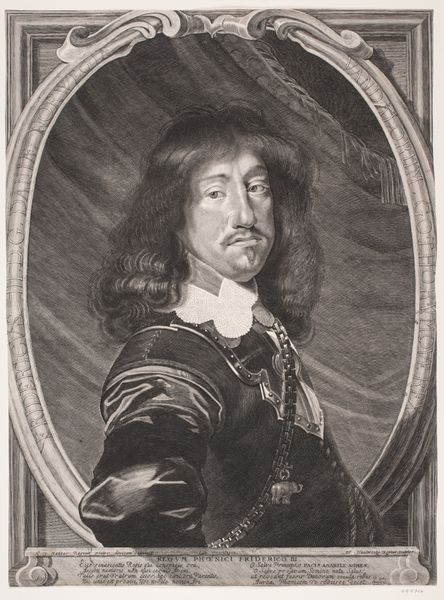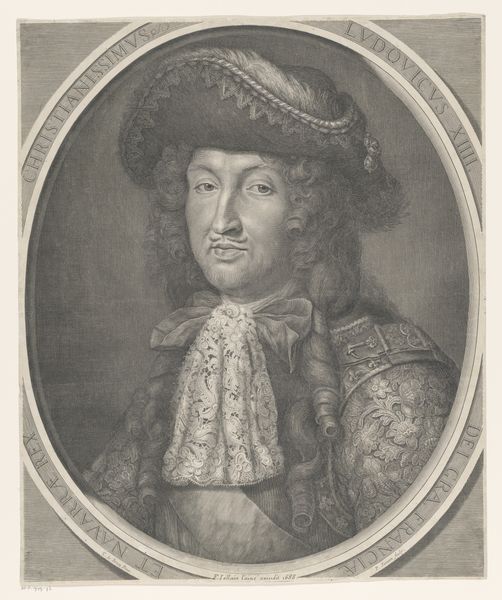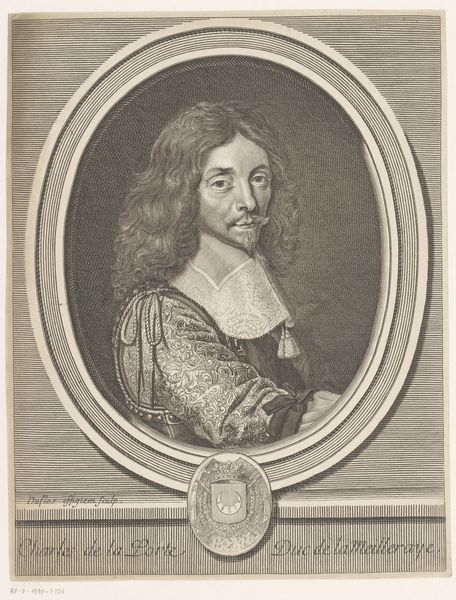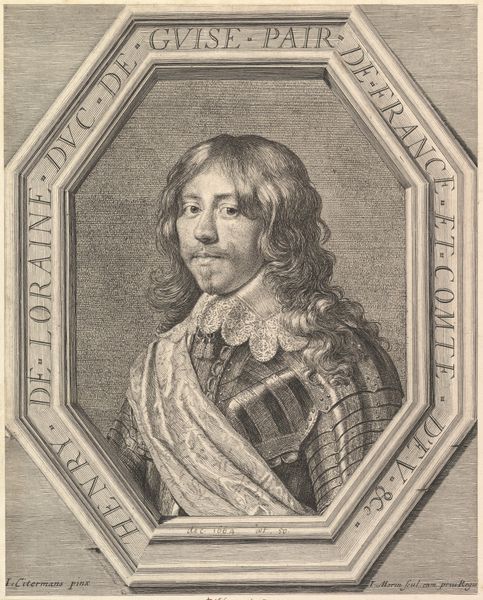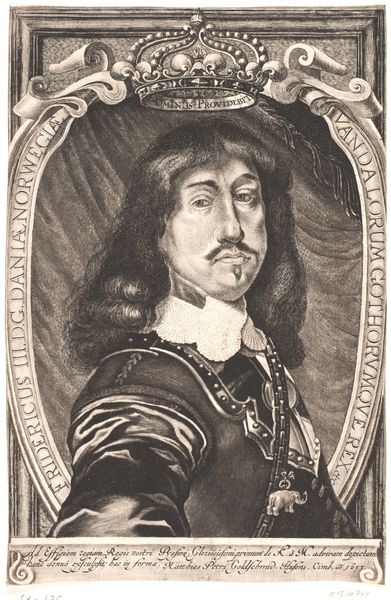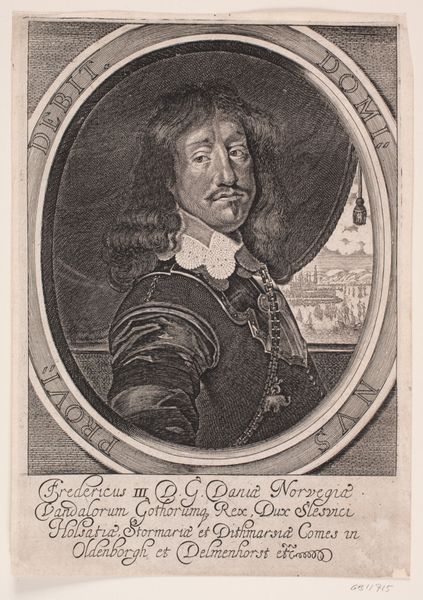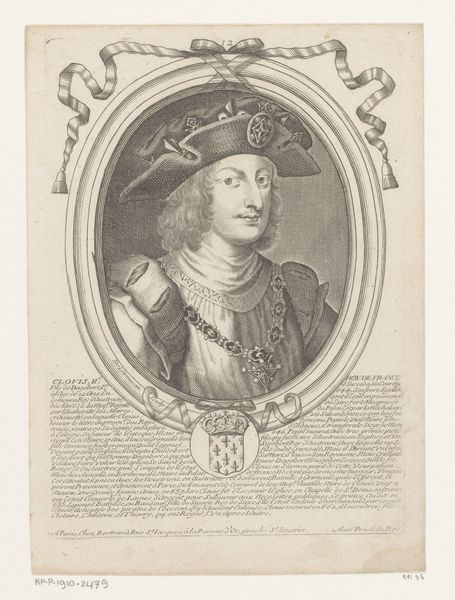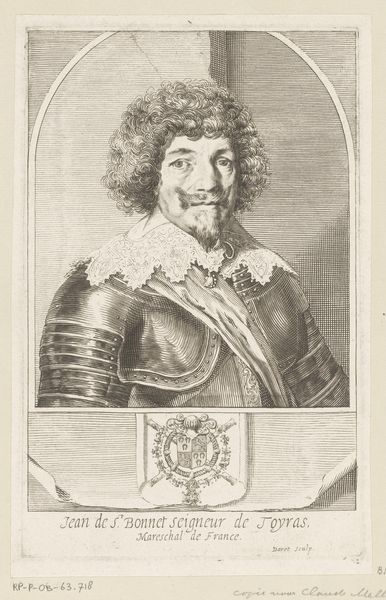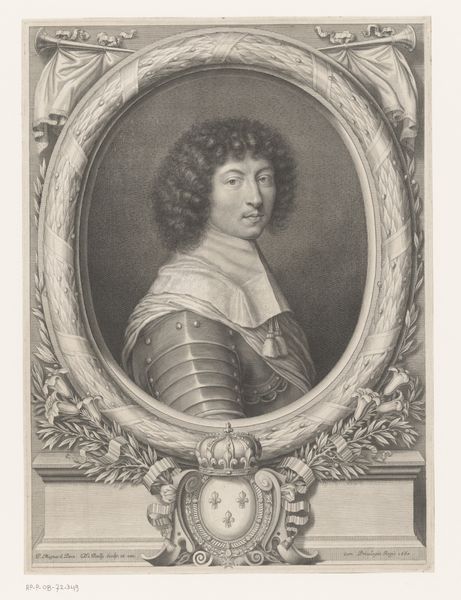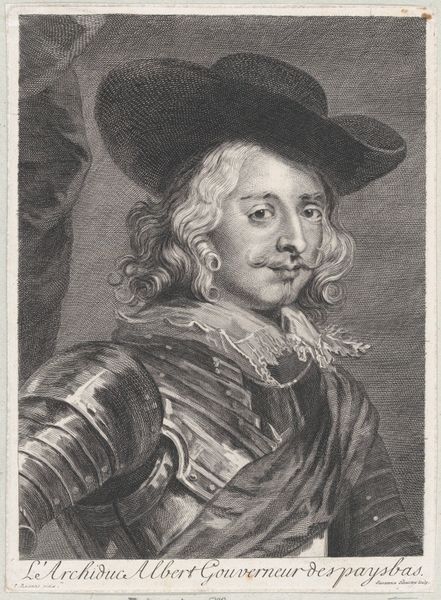
painting, oil-paint
#
portrait
#
baroque
#
painting
#
oil-paint
#
sculpture
#
oil painting
#
portrait reference
#
genre-painting
Dimensions: 3.2 cm (height) x 2.6 cm (width) (Netto)
Curator: This striking oval portrait is titled "Den udvalgte prins," or "The Chosen Prince," created sometime between 1624 and 1670. It's the work of Karel van Mander III and rendered in oil paint. My initial impression is one of muted elegance and a distinct formality. Editor: Yes, there’s a subdued opulence, isn’t there? That feather in his hat and the lace collar speak of status, yet the color palette feels restrained, almost melancholic. Who was this "chosen prince," and what societal pressures defined his identity? Curator: Precisely. While the sitter's specific identity remains debated, it's likely a member of the Danish or Northern European aristocracy. Consider how such portraiture functions within Baroque society – reinforcing social hierarchies. What do the visual elements suggest to you about princely iconography here? Editor: Immediately I see the oval shape; it's almost medallion-like, referencing ancient Roman portraits and concepts of leadership. The soft blue backdrop sets a stage, an ethereal space for what amounts to an idealized representation. But something feels off – is it the small size that lends to the effect, as though looking through a keyhole? Curator: I agree that its diminutive scale enhances the work's precious quality. Consider the intersection of gender and power: men often utilize these types of intimate, accessible images for asserting dynastic legitimacy or forming political bonds. The very fact of painting a portrait, miniaturized or no, implies considerable authority. What underlying narratives of state power do we glimpse in this portrayal? Editor: Absolutely. The hat could signal his role as military commander, and the color could link to the family colors, yet it's all very gentle. The gaze is knowing yet mild, suggesting power tempered by compassion. The work becomes interesting to me exactly where these signifiers clash. Curator: Yes, van Mander isn't offering an uncritical portrayal of sovereignty, perhaps even suggesting an individual grappling with societal expectations of their station, considering, again, the potential dates in the period following the Thirty Years War, during which time ideas of leadership and social accountability would've been reshaped and questioned. Editor: That gives me a fresh understanding of the man’s presentation, it's all a dance, one he clearly navigates well enough. Now when I see him I cannot help but look into his life, his period, his place, I see continuity within an arc of symbols, not just his time in it. Curator: And for me, I feel the impact of portraiture on the creation of identity, then and now, because it reflects so much about how we engage with historical narratives, the legacies of patriarchy, the enduring, contested relationship between subject and artist.
Comments
No comments
Be the first to comment and join the conversation on the ultimate creative platform.
